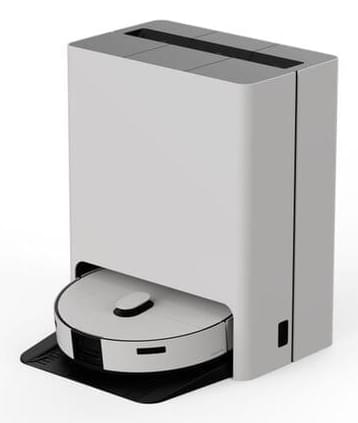LG’s pre-CES announcements include a slew of new home entertainment products, including the wireless, 97-inch M4 OLED TV, ultra-slim G4 OLED TV, and a tiny, high-contrast portable projector.




Samsung is planning to release what might be the most advanced cleaning robot yet: a robot vacuum and mopper that will steam clean floors and use AI to detect stains.
The upcoming “Bespoke Jet Bot Combo” cleaner will have a charging base that will auto wash, clean, and dry the robot’s mop pads.
The device will also use AI to detect floor types, objects, and spot stains. When the robot detects a stain, “it goes back to the clean station to heat the mop pads with high-temperature steam and water and then returns to the area,” says a press release on Samsung’s website.
“[People] like themselves just as they are,” says Marvin Minsky. “Perhaps they are not selfish enough, or imaginative, or ambitious. Myself, I don’t much like how people are now. We’re too shallow, slow, and ignorant. I hope that our future will lead us to ideas that we can use to improve ourselves.”
Marvin believes that it is important that we “understand how our minds are built, and how they support the modes of thought that we like to call emotions. Then we’ll be better able to decide what we like about them, and what we don’t—and bit by bit we’ll rebuild ourselves.”
Marvin Minsky is the leading light of AI—artificial intelligence, that is. He sees the brain as a myriad of structures. Scientists who, like Minsky, take the strong AI view believe that a computer model of the brain will be able to explain what we know of the brain’s cognitive abilities. Minsky identifies consciousness with high-level, abstract thought, and believes that in principle machines can do everything a conscious human being can do.



In today’s tech-savvy world, we’re surrounded by mind-blowing AI-powered wonders: voice assistants answering our questions, smart cameras identifying faces, and self-driving cars navigating roads.
Curious about optimizing AI for everyday devices? Dive into the complete overview of MIT’s TinyML and Efficient Deep Learning Computing course. Explore strategies to make AI smarter on small devices. Read the full article for an in-depth look!

TOKYO — Nikon, Sony Group and Canon are developing camera technology that embeds digital signatures in images so that they can be distinguished from increasingly sophisticated fakes.
Nikon will offer mirrorless cameras with authentication technology for photojournalists and other professionals. The tamper-resistant digital signatures will include such information as date, time, location and photographer.

Machine learning could also help us create more data to study. By identifying perhaps as many as 10 times more earthquakes in seismic data than we are aware of, Beroza, Mousavi, and Margarita Segou, a researcher at the British Geological Survey, determined that machine learning is useful for creating more robust databases of earthquakes that have occurred; they published their findings in a 2021 paper for Nature Communications. These improved data sets can help us—and machines—understand earthquakes better.
“You know, there’s tremendous skepticism in our community, with good reason,” Johnson says. “But I think this is allowing us to see and analyze data and realize what those data contain in ways we never could have imagined.”
While some researchers are relying on the most current technology, others are looking back at history to formulate some pretty radical studies based on animals. One of the shirts I collected over 10 years of attending geophysics conferences features the namazu, a giant mythical catfish that in Japan was believed to generate earthquakes by swimming beneath Earth’s crust.

The US is trying its best to slow China down.
However, an equally serious challenger has now emerged in the form of SEIDA, a Chinese startup founded by a veteran Silicon Valley software executive.
Liguo “Recoo” Zhang, the CEO of SEIDA, and three other Chinese-born colleagues left Siemens EDA, a U.S. unit of Siemens AG, aiming to break the foreign monopoly on Optical Proximity Correction (OPC) technology, reported Reuters.
The OPC tool is indispensable for designing advanced chips crucial for emerging technologies like artificial intelligence and quantum computing. SEIDA’s bold pitch attracted powerful Chinese investors, including Semiconductor Manufacturing International Corp (SMIC), a leading Chinese microchip maker with alleged ties to China’s military.